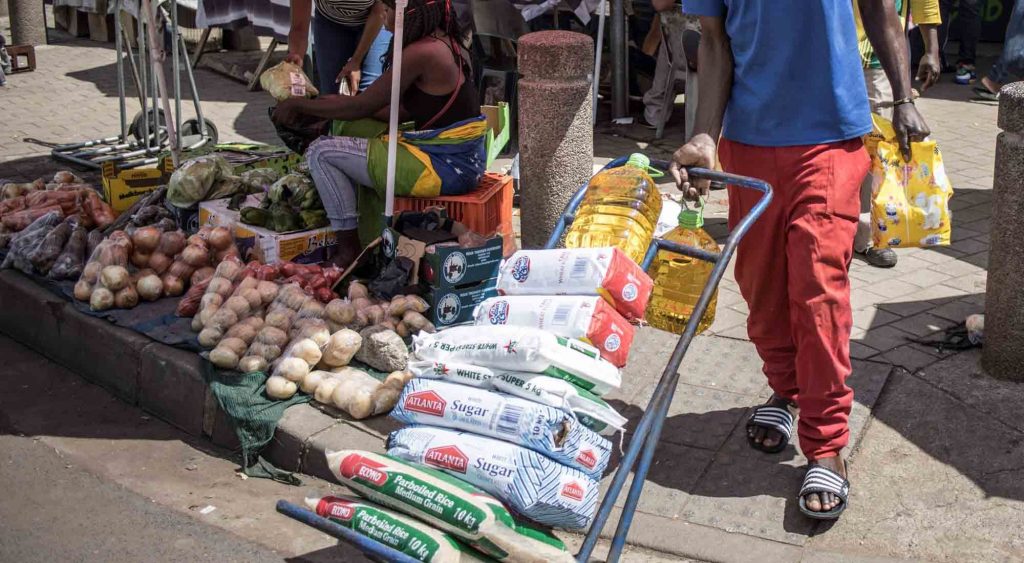
The latest update from Statistic South Africa shows that the country’s headline inflation rate accelerated to 7% year-on-year in February 2023. This increase was underpinned by food and non-alcoholic beverages, housing and utilities, transport, and miscellaneous goods and services. While this is only a small increase from January’s 6.9%, it marks a significant jump from November and December 2022, which saw inflation rates of 7.4% and 7.2%, respectively.
The food category was a major driver of this inflation, with prices jumping to a record high of 14% year-on-year since March 2009. Within the food category, the bread and cereals category saw the highest increase of 20.5% year-on-year in February 2023, although this was slightly slower than the pace in January, which saw an increase of 21.8%. This increase reflects price gains of raw commodities in 2022 that manufacturers are still carrying, and is further exacerbated by the cost pressures emanating from load shedding.
Meat, which has a higher weight of 35% in the food basket, saw an increase of 11.4% year-on-year in February 2023. However, this rate decelerated to 0.2% month-on-month after jumping 2.6% in January. Cost pressures emanating from elevated feed costs and load shedding were the biggest drivers of higher meat inflation as producers, especially those in intensive production systems, were left with no choice but to recover costs.
Other sizeable increases included oils and fats, vegetables, and other foods, with 16.7%, 15.7%, and 15.0% year-on-year, respectively. Gains in oils and fats reflect the elevated trend in domestic oilseed crop prices relative to last year. However, monthly prices on both the domestic and international markets trended on the downside in February, which has the potential to limit further upside in consumer prices in the months ahead.
Fortunately, the domestic summer crop season is expected to end on a high note with a good harvest given the excellent seasonal conditions. This bodes well for food inflation in the months ahead. It is important to note that global food inflation remains on the downside as per the United Nations Food and Agriculture Organization’s February update, which showed a fourth consecutive decrease to -8.1% year-on-year.
In conclusion, while the rise in inflation to 7% year-on-year is a concern, it is reassuring to see some moderation in grain prices relative to 2022 levels. The good harvest expected from the domestic summer crop season may further limit the upside in consumer prices in the months ahead. It remains to be seen how long the inflationary pressures will persist, but it is clear that addressing load shedding and other cost pressures will be critical in mitigating the impact on the economy and the consumer.


















